Almost a century and a half ago, a 300-metre-high metal tower rose from the ground for the 1889 Paris World’s Fair, celebrating the first centenary of the French Revolution.
Designed and patented by steel bridge engineer Gustave Eiffel, its structure and pointed, arched form were actually imagined by two of his assistants, Émile Nouguier and Maurice Koechlin.
Controversial at the time of its construction and rejected by many Parisians, the Eiffel Tower was destined to be dismantled 20 years after the Universal Exhibition, but it escaped its fateful fate, largely thanks to the addition of Hertzian antennae, essential for telecommunications during the two world wars.
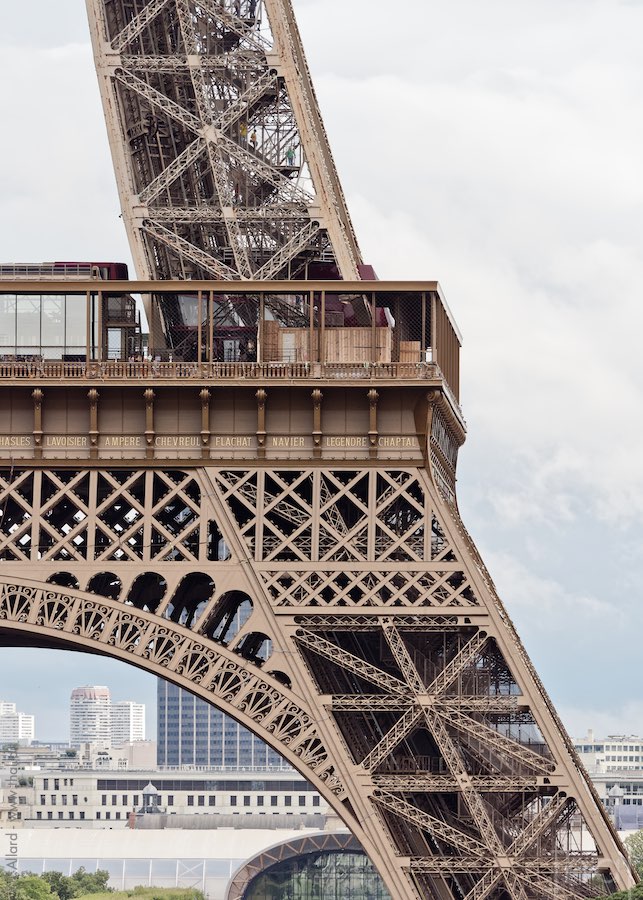
The symbol of Paris (and France) endures and escapes corrosion thanks to a new coat of paint every 7 years.
In 2024, the tower was restored to its former glory and its 1907 golden brown colour for the Paris Olympic Games.
It’s a great opportunity to reopen your eyes to this building, whose importance seems destined to last forever.
ANOTHER LOOK • PHOTO SPOTS • VISIT THE TOWER • THE TOWER IN FIGURES
A different way to photograph the Eiffel Tower
Like all icons, millions of times represented, the tower has become commonplace in the collective mind, especially since, with its four identical faces, it looks the same from every point of view.
Truth of the palisade
Preparations for the Olympic Games have led to a lot of work being carried out around the Eiffel Tower, some of which has resulted in its partial disappearance…

Love makes you blind
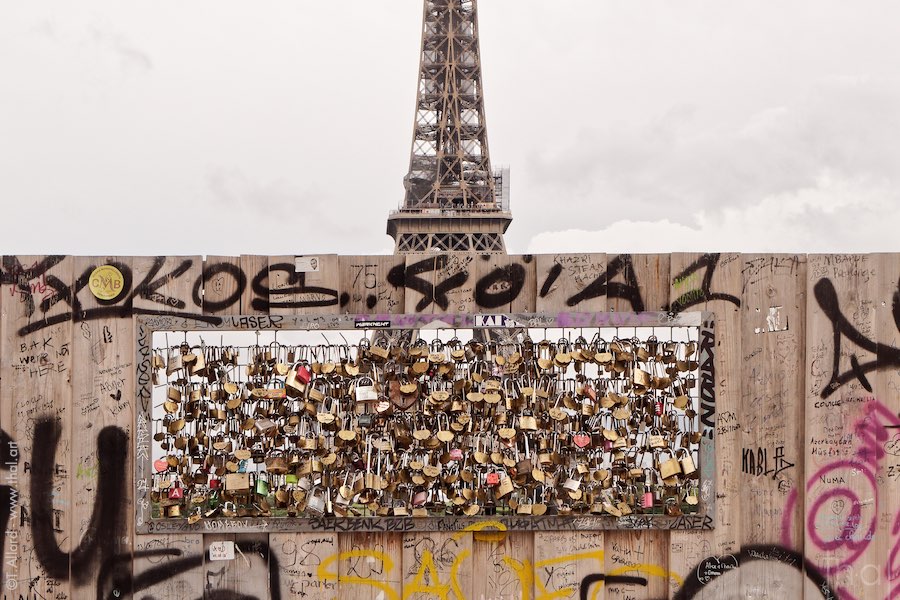
After the Parisian bridges had been padlocked, some lovers foolishly attacked the view of the Tower from the Trocadero esplanade during the preparatory work for the Paris Olympic Games.
Beauty and the beast
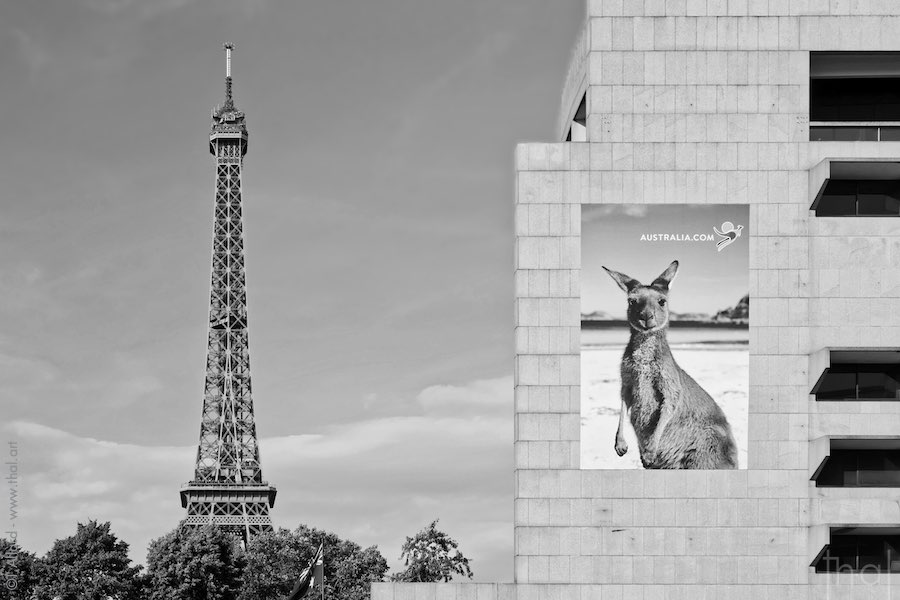
A battle of icons: when Australia symbolically boxed the Parisian icon by displaying a kangaroo on its Brutalist embassy (designed by architect Harry Seidler).
The Rat and the Tower
With the help of AI Midjourney, I was able to create an image of the tower, seen at night*, incorporating another “symbol” of Paris, which is housed in numbers beneath the building…
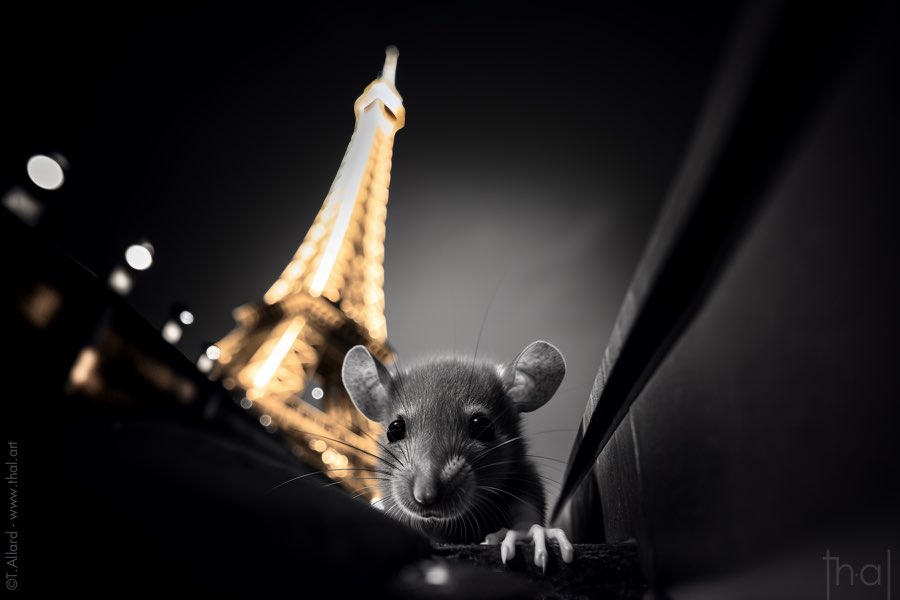
*As the Eiffel Tower’s night lighting is a recent original creation, a real night photograph can be used on a personal basis, but would require rights or authorization to be published in this article.
City of light(s)
By moving away from the Eiffel Tower, we can still restore meaning to it, as here, from the esplanade at La Défense.
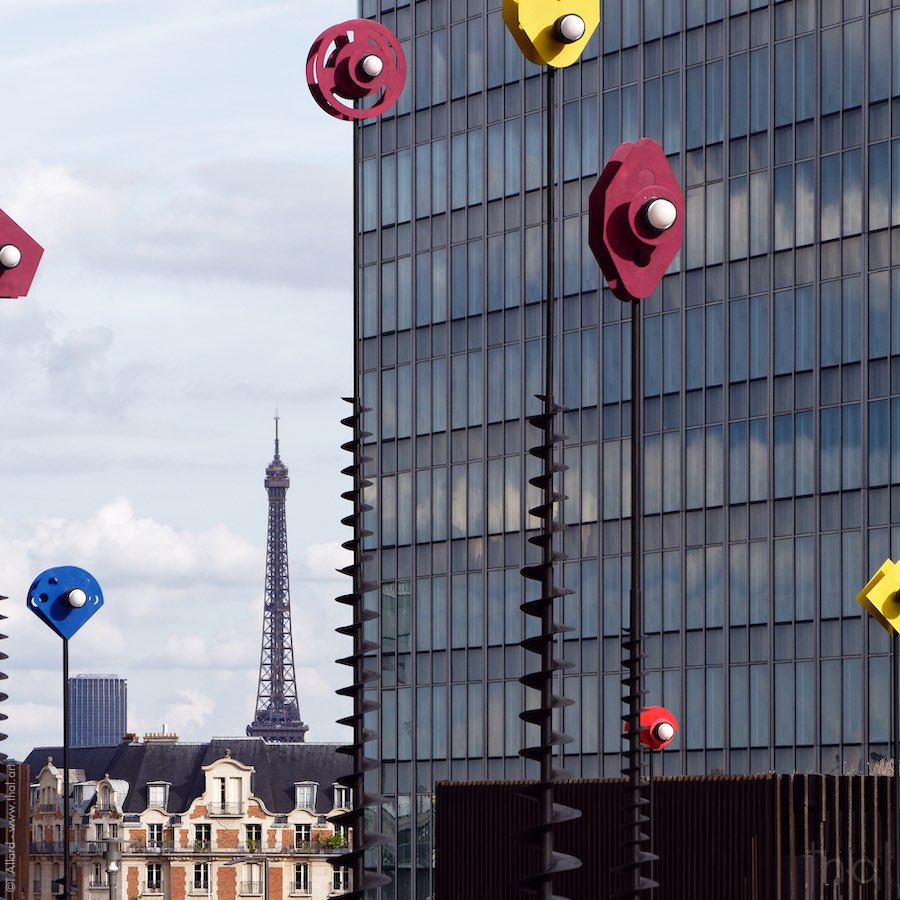
The “Signaux Lumineux”, by Greek sculptor Takis, mounted on metal posts, symbolically echo the Eiffel Tower’s role as a lighthouse.
Street photography near the Eiffel Tower
Between selfies and photos of urban architecture, there’s still the possibility of composing with passers-by and especially tourists, who are particularly numerous in the vicinity of the Eiffel Tower.
3 photo spots on the Seine side
Bir-Hakeim bridge
It’s one of my favorite spots for street photography, integrating the Eiffel Tower.
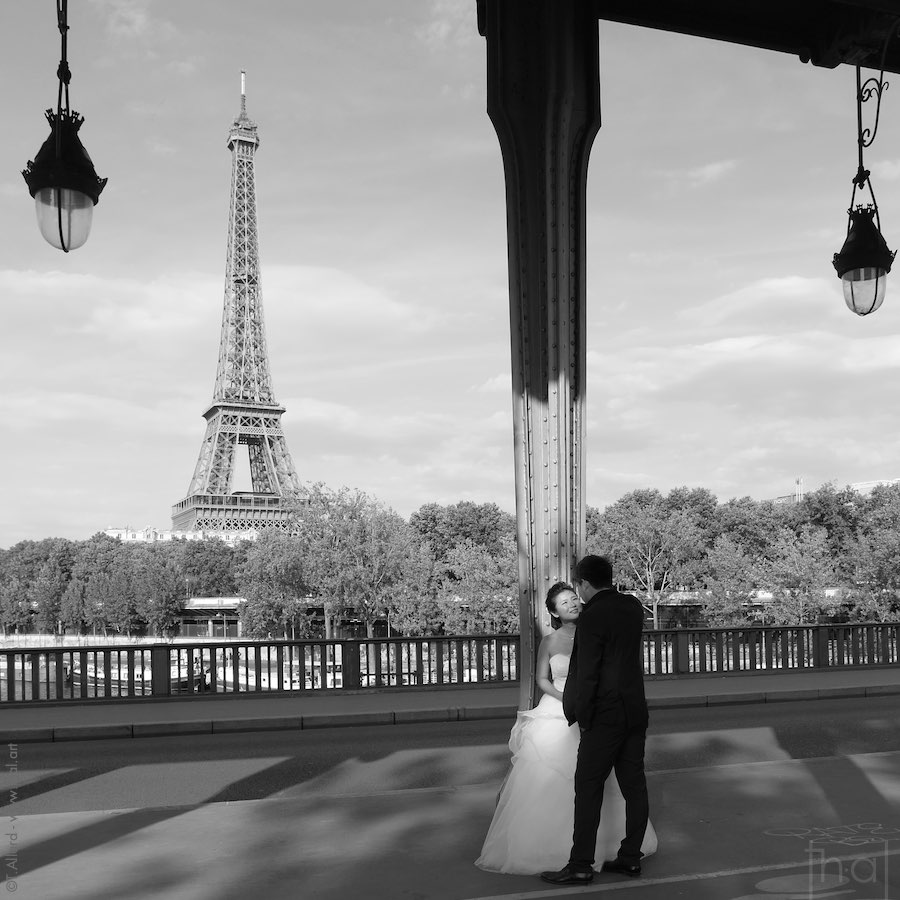
One of Paris’s most original bridges, with its riveted metal structure (like the tower) supporting an overhead metro track, is an ideal photo spot to integrate couples or tourists with the tower in the background.

Highly “Instagramable”, the Bir-Hakeim bridge attracts all the social networking influencers, like the budding asphalt videographers from Tik Tok.
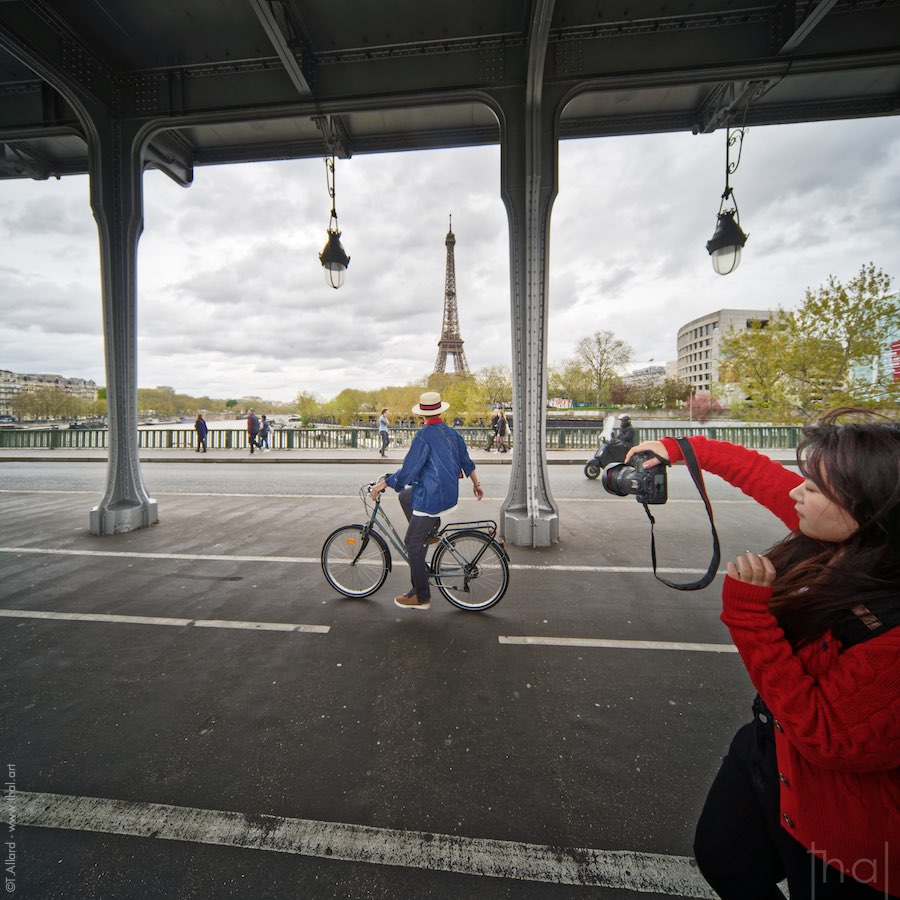
The Trocadero
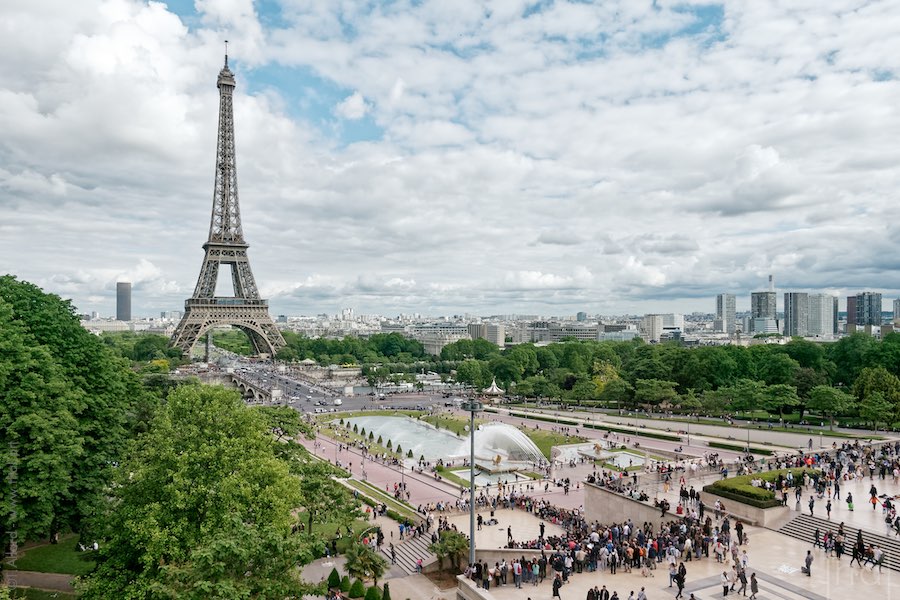
This is the ultimate “postcard” photo spot, allowing you to integrate the Eiffel Tower in its entirety with passers-by:
1. From an elevated viewpoint from the Trocadero esplanade or adjoining museums.
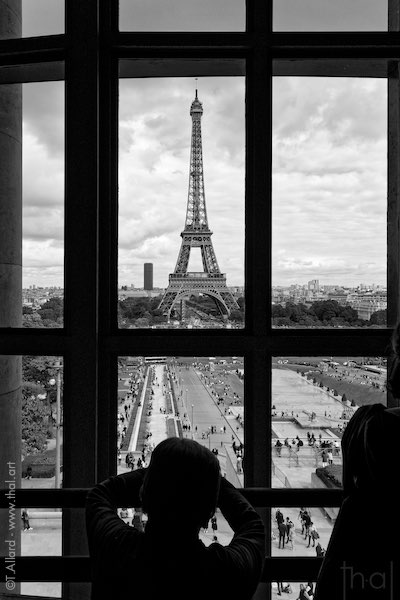
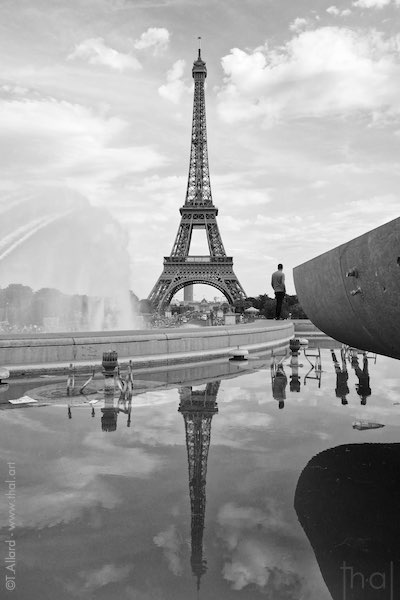
2. Below the esplanade, in the adjoining gardens (or next to the fountains).
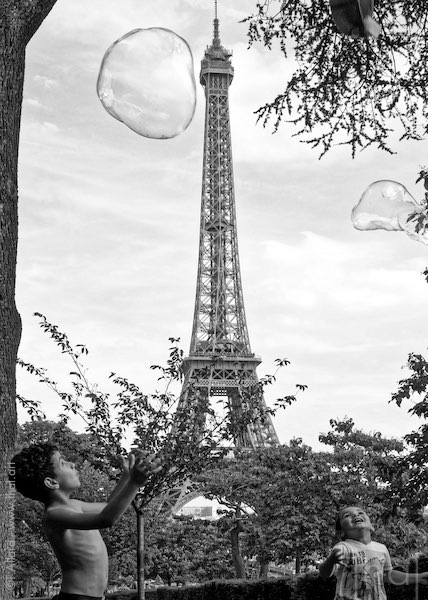

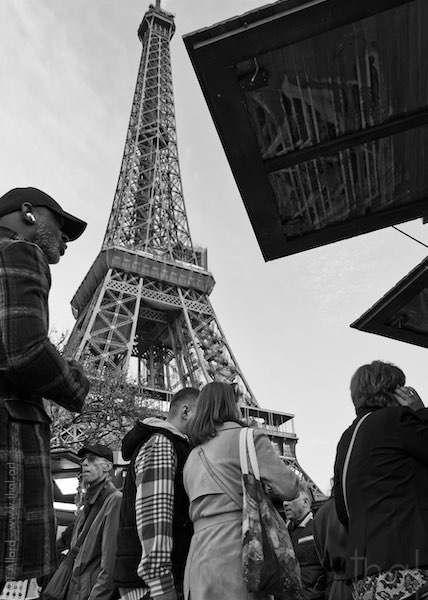
Camoëns Avenue
This cul-de-sac (and elevated) street is close to the Palais du Trocadéro and is very popular on social networks.
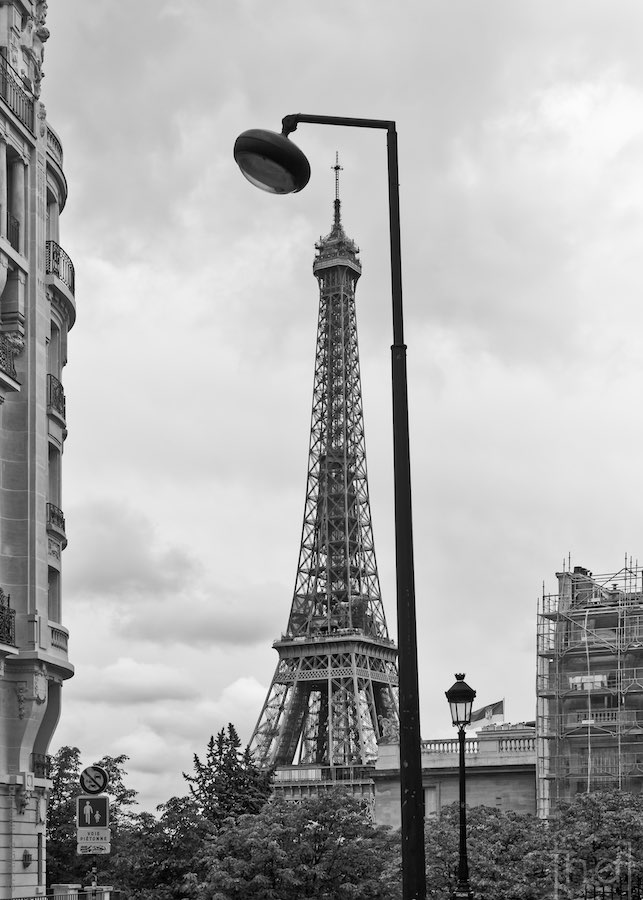
How to visit the Eiffel Tower
The garden
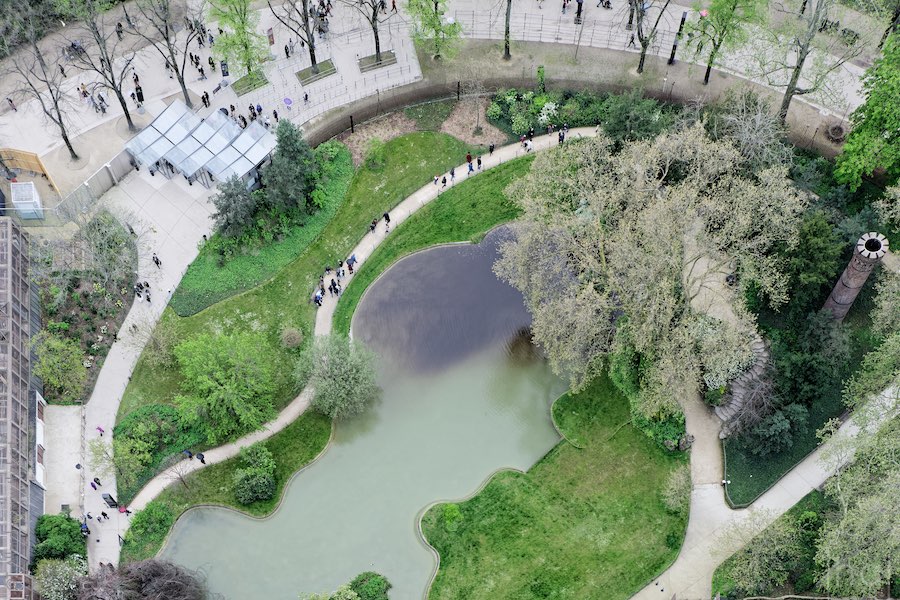
Access to the garden surrounding the Eiffel Tower is free. There is a queue to get through the reception gates, with a security check.
The underside of the Eiffel Tower
As with the gardens, access is free of charge.
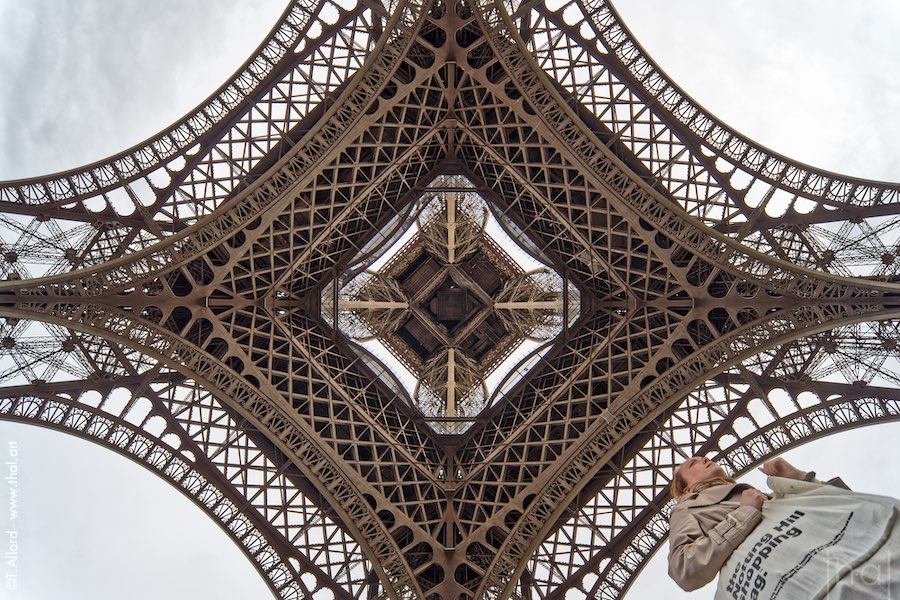
The third floor
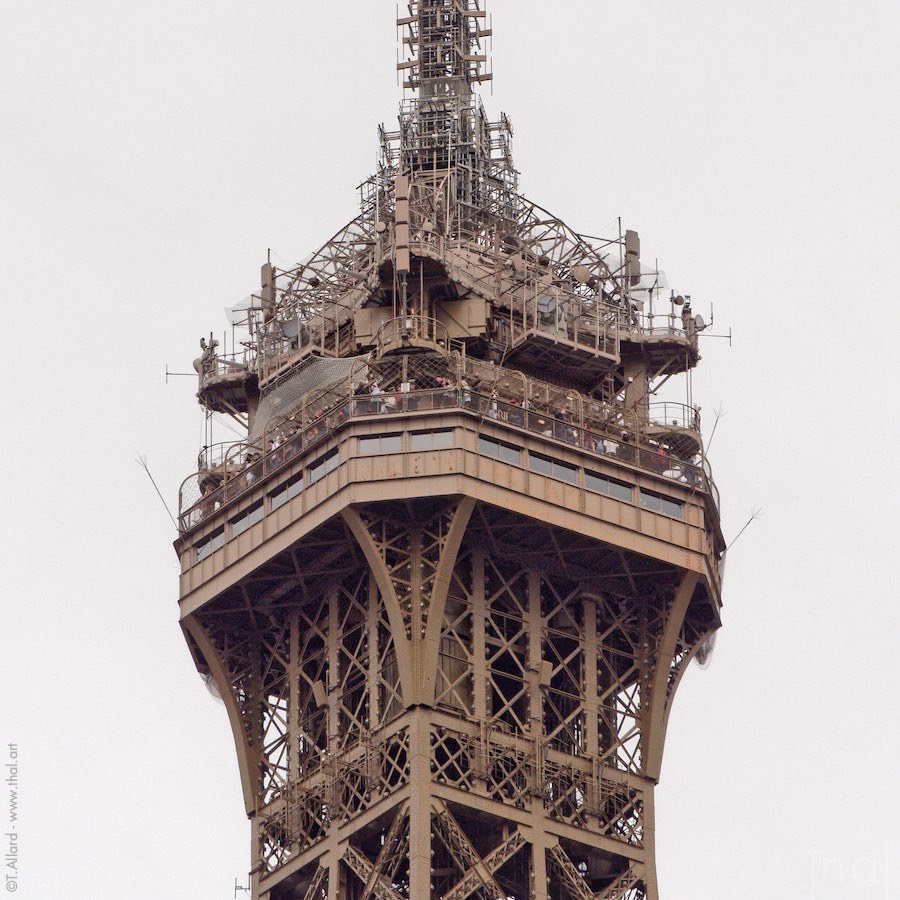
The top of the Eiffel Tower is accessible to visitors in two ways:
- By elevator only (most expensive ticket).
- Walk to the second floor, then take the obligatory elevator to the top (25% cheaper).
- You can stop and visit all floors.
- During summer or busy periods, such as the Paris 2024 Olympic Games, it’s imperative to book your ticket several days in advance.
The second floor
If you’d like to limit your visit to the second floor effortlessly, by taking the elevators, it’s possible to buy a special ticket, 40% cheaper than that for the 3rd floor.
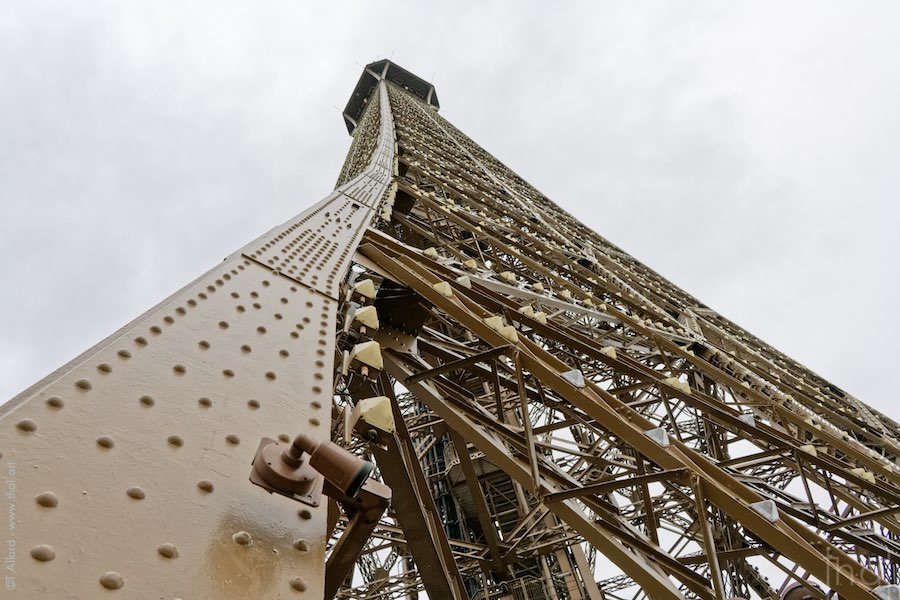
The right plan
If you don’t mind climbing the 674 steps (equivalent to around 40 storeys) to the tower’s second floor, you can take advantage of the most attractive rates, and best of all, you can get there without a reservation (queue varies according to attendance).
The view of Paris from the first two floors is already exceptional and panoramic.
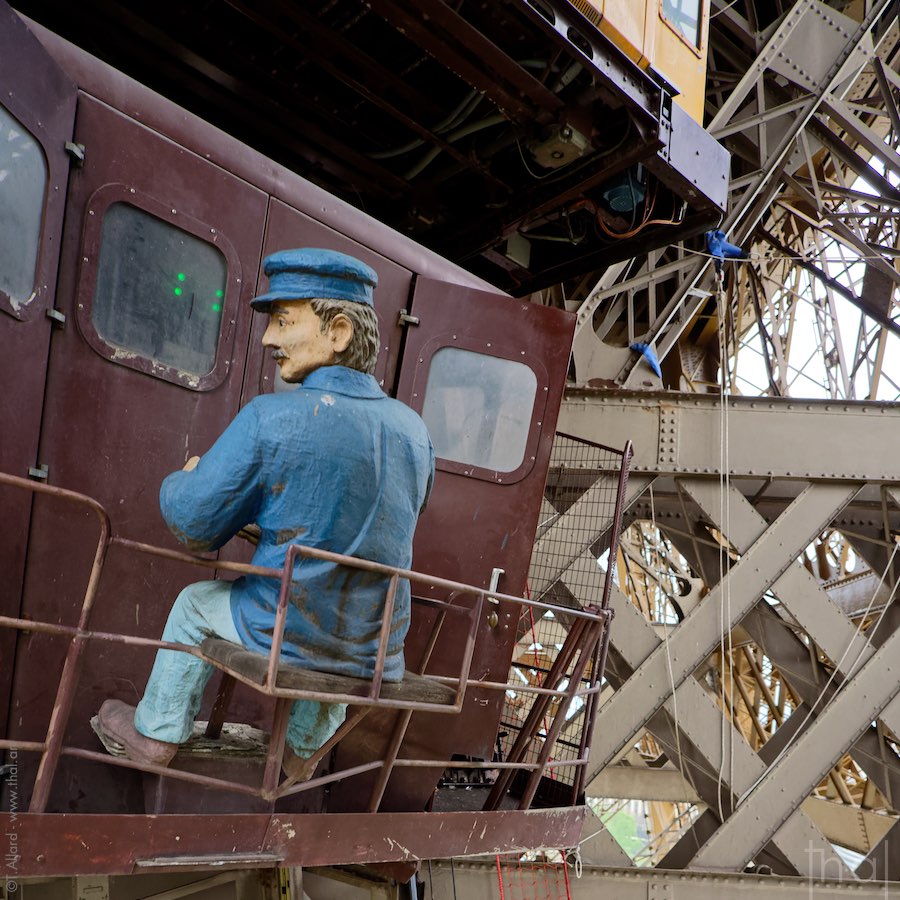
As you walk up, you may even catch a glimpse of the old Eiffel Tower elevator driver hiding beneath the new one.
First Floor
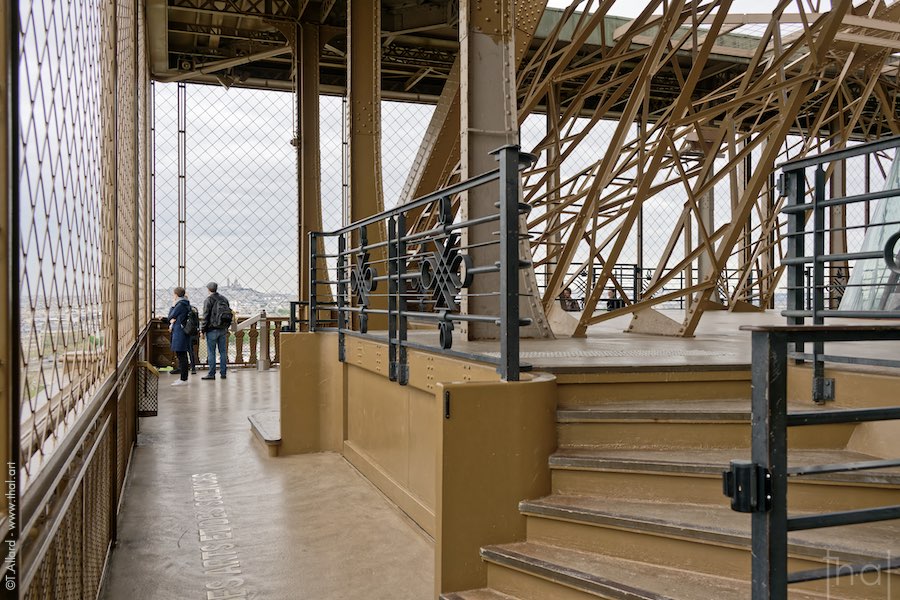
There’s no specific ticket for the second floor, and it can be visited with any of our packages.
On foot, 327 steps are required, equivalent to a 19-storey building.
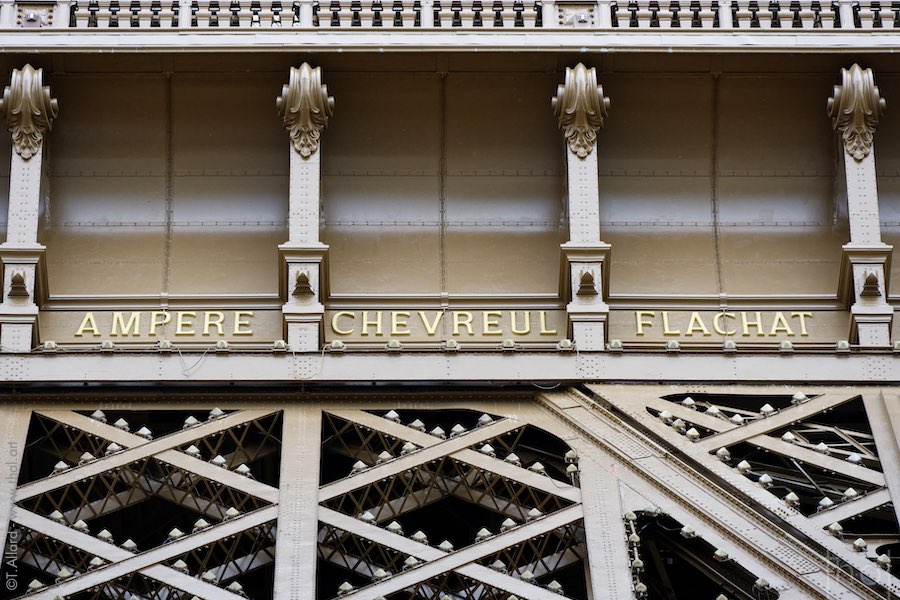
The restaurants
Reservations for one of the two Eiffel Tower restaurants do not include a ticket to visit the Tower, but only allow access by elevator.
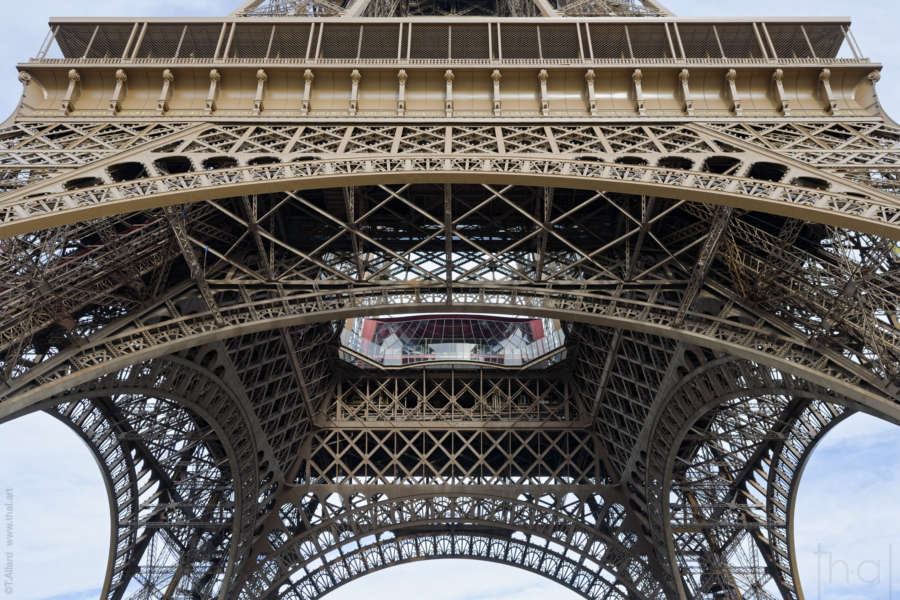
On the 1st floor, you’ll find a typical Parisian brasserie, and on the 2nd floor, the Jules Verne, a Michelin-starred gourmet restaurant.
Check out all the latest Eiffel Tower tour prices.
ANOTHER LOOK • PHOTO SPOTS • VISIT THE TOWER • THE TOWER IN FIGURES
The Paris lighthouse
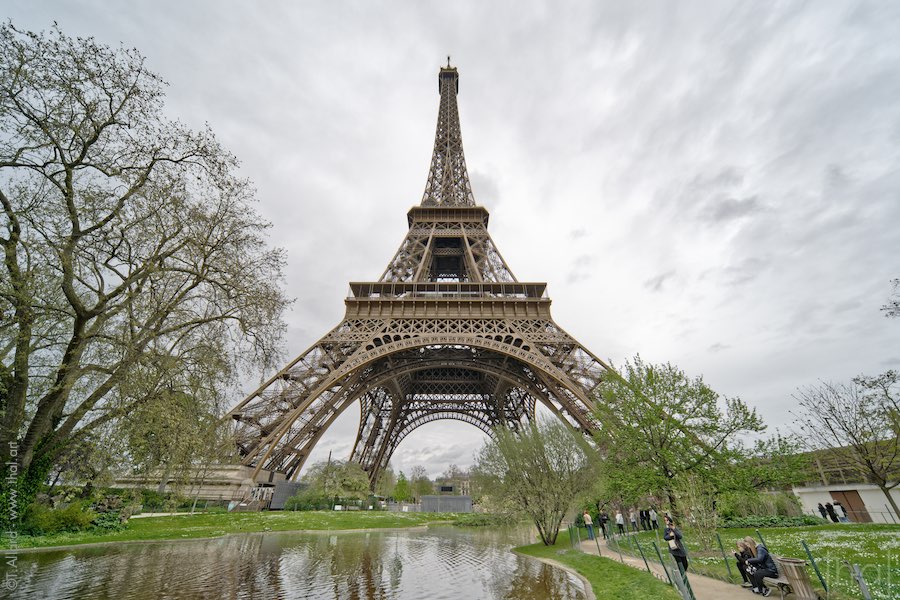
Although the Eiffel Tower has had a symbolic lighthouse at its summit since its creation, it was actually used for aerial navigation in the mid-20th century.
Since 2000, two beams of light have been rotating at regular intervals, visible from a distance of 80 km.
For a hundred years, its telecommunications, radio and television relay antennas have been part of the tower’s raison d’être, even if its tourist activity makes it indispensable to Paris.
3 facts and figures about the architecture of the Eiffel Tower
How high is the Eiffel Tower?
The Eiffel Tower, which measured 312 meters at its birth and had no antenna, would hold the record for the tallest human construction for almost half a century, until the Chrysler Building in New York was erected in 1930, and its spire added at the very last moment to gain a further 7 meters.
In 1889, the Eiffel Tower was a revolution, almost doubling (+143 metres) the tallest man-made structure built only 5 years earlier: the American stone obelisk at the Washington Monument.
The addition of Hertzian antennas in the course of the 20th century, and more recently in 2022, has raised its height to 330 metres.
How heavy is the Eiffel Tower?
At the time of its construction, the Eiffel Tower consisted of 7,300 tonnes of metal and 18,000 parts assembled using 2,500,000 rivets.
With 60 tonnes of paint and all its equipment, including the elevators, it now stands at 10,100 tonnes.
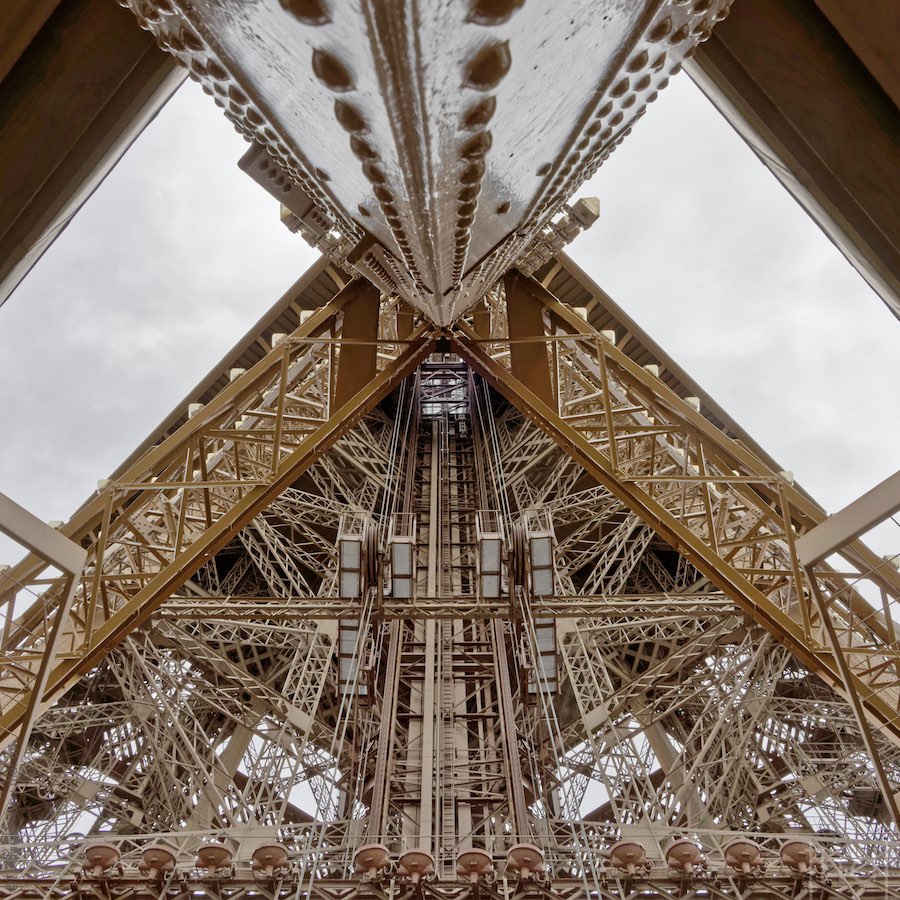
How does the Eiffel Tower sway?
Gustave Eiffel, a good engineer, had foreseen that his tower could oscillate by up to 70 cm.
In practice, the strongest winds never caused the monument to sway by more than 13 cm at the top, while heat-induced expansion of the metal did not cause it to move by more than 20 cm.
Find out more about the oscillation of the Eiffel Tower.
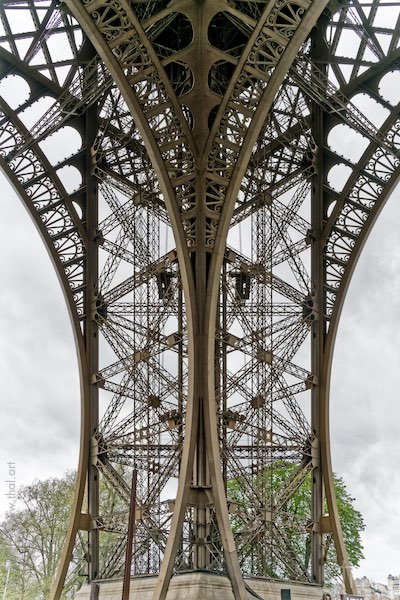

A short history of the Eiffel Tower
The highly ambitious project to build a 300-meter-high tower at the end of the 19th century to coincide with a World’s Fair in Paris attracted many inventors and architects.
The 1886 specifications set out the rules for a competition to build the world’s tallest tower:
“Competitors will have to study the possibility of raising on the Champ-de-Mars an iron tower with a square base, 125 meters square at the base and 300 meters high.”
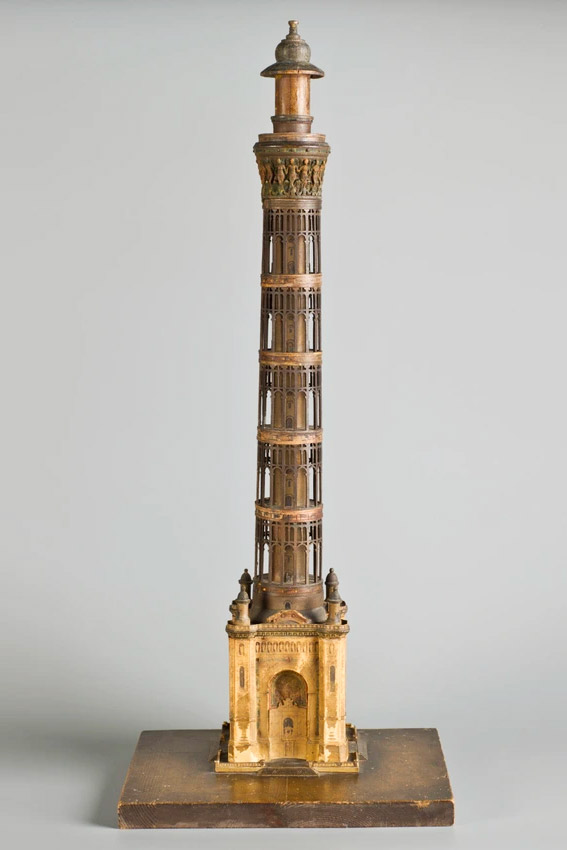
© Musée d’Orsay, Dist. RMN-Grand Palais / Patrice Schmidt
Gustave Eiffel’s project came in 4th place, out of a hundred proposals from all over the world, and found itself in final competition with that of a French architect, Jules Bourdais, who tried to propose a construction in stone rather than metal.
His ambition was to build a granite tower, a “lighthouse column” illuminating Paris. But the feasibility of such a construction in a relatively short space of time, taking into account its inordinate weight and outrageous cost, meant that the project was not taken up.
Gustave Eiffel’s Tower won the competition thanks to its low construction costs (thanks to savings on materials) and rapid implementation (2 years), not to mention some strategic political support…
With its curves evoking femininity, the Eiffel Tower still stands out today from the majority of straight-shaped buildings that have overtaken it.
Copied all over the world, the 165-metre-high replica of the most famous tower is located in Las Vegas, USA.
In Lyon, France, the metal Tour de Fourvière, built 5 years later, in 1894, is three times less high (101 metres with its antenna).
It is similar to the third floor of the Eiffel Tower, but is no longer open to visitors.
Thierry Allard
French photographer, far and wide
Please respect the copyright and do not use any content from this article without first requesting it.
If you notice any errors or inaccuracies in this article, please let me know!
You may also be interested in other examples of Parisian architecture
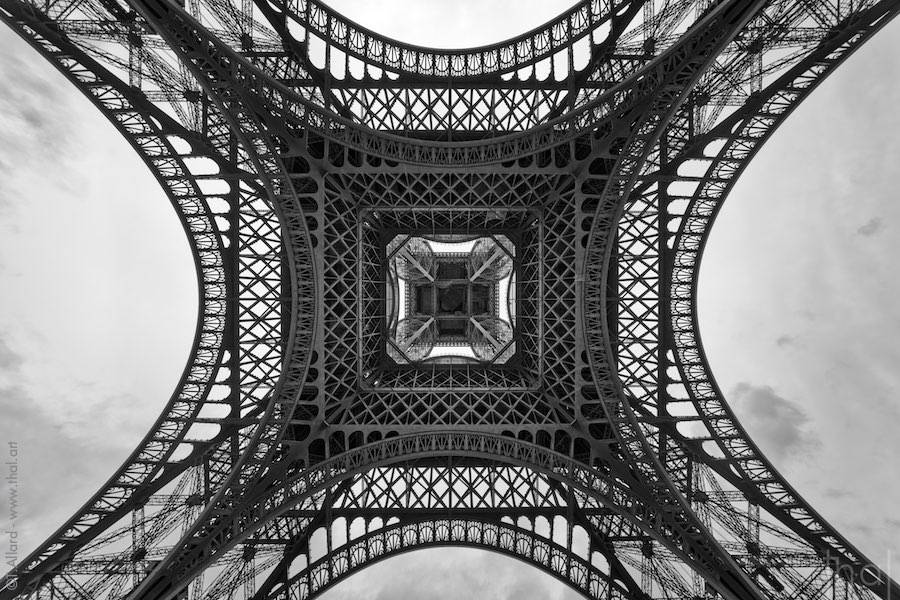


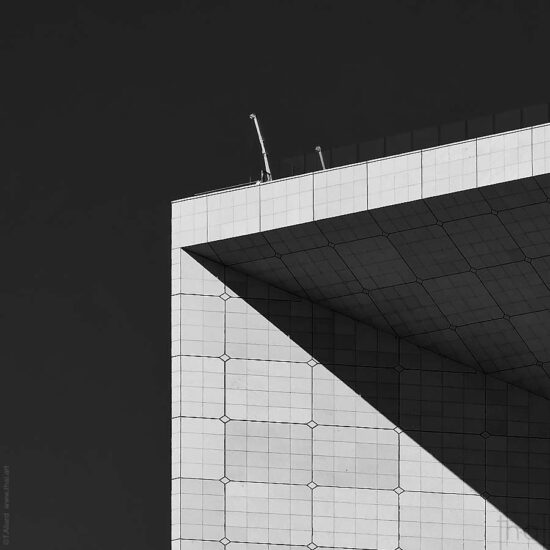


2 thoughts on “ The Eiffel Tower struts its stuff over Paname’s macadam ”
Comments are closed.